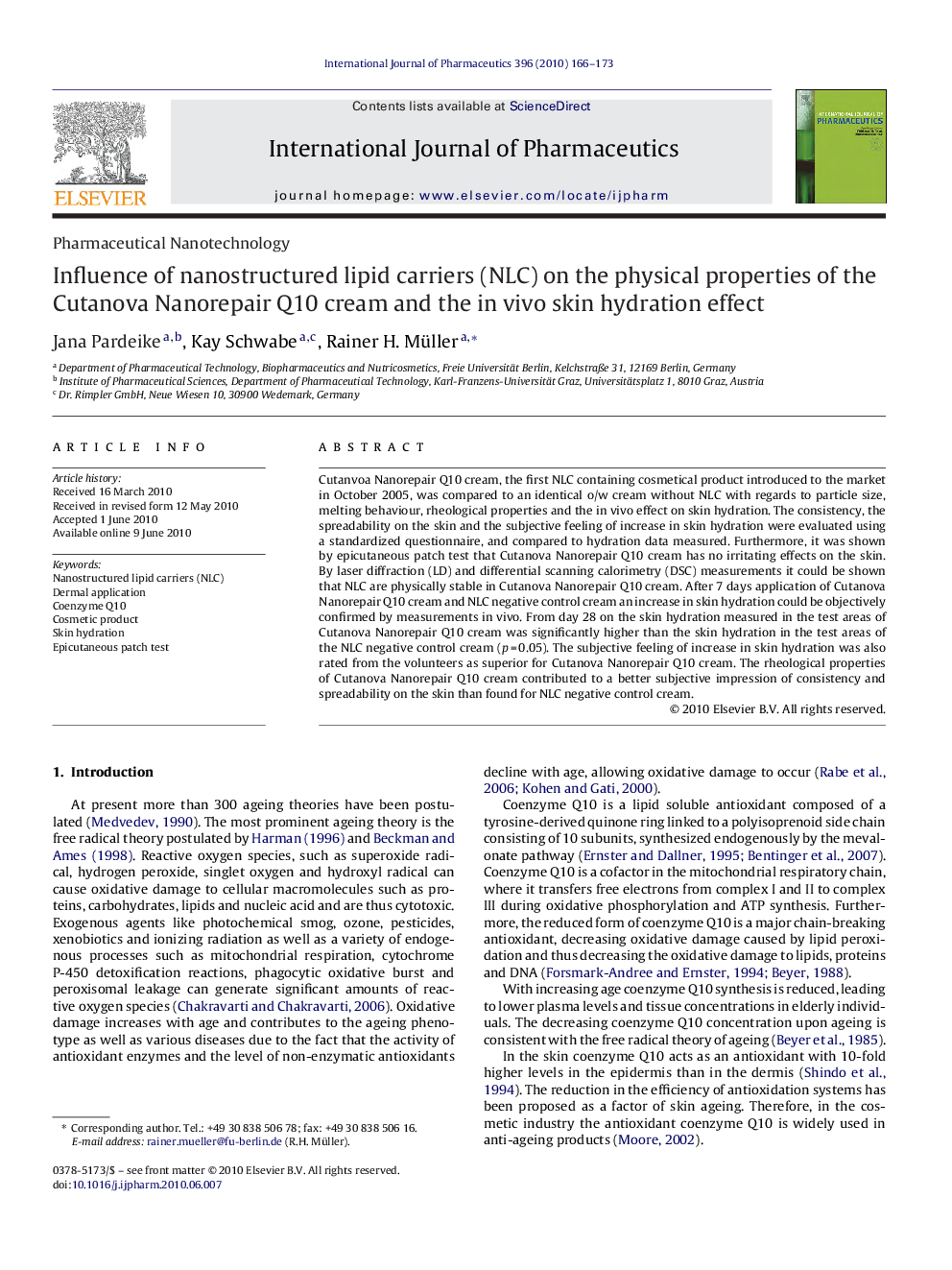| Article ID | Journal | Published Year | Pages | File Type |
|---|---|---|---|---|
| 2504027 | International Journal of Pharmaceutics | 2010 | 8 Pages |
Cutanvoa Nanorepair Q10 cream, the first NLC containing cosmetical product introduced to the market in October 2005, was compared to an identical o/w cream without NLC with regards to particle size, melting behaviour, rheological properties and the in vivo effect on skin hydration. The consistency, the spreadability on the skin and the subjective feeling of increase in skin hydration were evaluated using a standardized questionnaire, and compared to hydration data measured. Furthermore, it was shown by epicutaneous patch test that Cutanova Nanorepair Q10 cream has no irritating effects on the skin. By laser diffraction (LD) and differential scanning calorimetry (DSC) measurements it could be shown that NLC are physically stable in Cutanova Nanorepair Q10 cream. After 7 days application of Cutanova Nanorepair Q10 cream and NLC negative control cream an increase in skin hydration could be objectively confirmed by measurements in vivo. From day 28 on the skin hydration measured in the test areas of Cutanova Nanorepair Q10 cream was significantly higher than the skin hydration in the test areas of the NLC negative control cream (p = 0.05). The subjective feeling of increase in skin hydration was also rated from the volunteers as superior for Cutanova Nanorepair Q10 cream. The rheological properties of Cutanova Nanorepair Q10 cream contributed to a better subjective impression of consistency and spreadability on the skin than found for NLC negative control cream.
